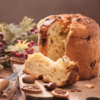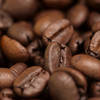Get to Know Antica Cantina di Canelli
“It is only fitting that Antica Cantina di Canelli has chosen the legendary stage of the Saratoga Wine & Food and Fall Ferrari Festival to debut a selection of wines from its distinguished portfolio to members of the trade, press and public.” With these words Italian Trade Commissioner Aniello Musella officially welcomed the wine sponsor of the 2012 edition of the celebrated festival.
On the fourth year of the partnership between the Italian Trade Commission and SPAC (the Saratoga Performing Arts Center) the air at the four day festival (Sept. 7-9) was totally Italian, indeed, using Marcia J. White's (SPAC's president) words the theme was “a salute to style... and the Italian lifestyle and spirit is one that values quality, admires beauty and, above all, embraces the moment. This weekend we are all Italian!”
And what's more Italian than delicious wine and food? The Italian Pavilion presented by Antica Cantina di Canelli featured a myriad of Italian wines and authentic Italian delicacies where attendees enjoyed learning about Canelli’s production which included: Duebollicine - Pinot Chardonnay Brut, Asti Spumante DOCG, Moscato Dolce VSQ Spumante, Brachetto d’Acqui - Spumante DOCG, Moscato d’Asti - Bricco Sant’Antonio DOCG, Piemonte Chardonnay DOC, Barbera d’Asti Albarelle DOCG and single vineyard Barbera d’Asti Superiore - Vigna Tre Termini DOCG.
Located between the Langhe and Monferrato, in the Asti region, an area with a strong tradition of wine making, home to some of Italy's finest red wines, plus some famous whites, the Antica Cantina di Canelli has been producing the classic wines of Piedmont since 1933. Working with absolute respect for tradition and integrating the latest innovations, Antica Cantina di Canelli brings together the production and resources of over 200 vine-growers. Their ample range of products includes the most prestigious appellation wines of the Asti area, including light, fresh and fruit whites, sweet and dry sparkling wines and world class reds obtained from the grapes of mature vines.
An idyllic municipality in Piedmont, Canelli is dominated by a castle surrounded by a medieval hamlet. The area around the town is rich in vineyards and is believed to be the birth place of the Italian sparkling wine Asti. The village's history of the wine is still evident today with the popular synonym of “Muscat Canelli”that is still used for the Moscato grape used to produce the wine.
The town’s most unique characteristic is the peculiarity of its subterranean wine cellars. We are talking about an extended architectonic fortune of “Underground Cathedrals” that wiggle below the entire city for about 20 kilometers (12 miles), and disappear on different levels in the viscera of tufa hills (all the way to 32 meters/104 feet underground) thus creating really suggestive scenarios: real masterpieces of engineering and architecture. In the naves of these cellars, bottles of prestigious wines are aged at a constant temperature of 12-14 ºC (53-57 ºF) degrees.
In the mid 1800’s, Piedmont’s production of white Muscat grapes was centered in the Canelli area, while another came from the nearby municipality of S. Stefano Belbo and the rest from the neighboring municipalities. A big chunk of the wine was commercialized in barrels that the barrooms and taverns of the area resold by the flask or by the glass. “Vermouth” had Muscat as its base wine and in order to turn it into sparkling, alcoholic fermentation had to happen in the bottle. This radically changed production: companies evolved from artisanal production to a more “industrial” method. Vermouth and “Muscat Champagne” (“Muscat Canelli” as it was called at the time) rose to popularity at the same time, so much that, in order to meet requests, dozens of production houses were opened in the historic center. After the construction of the railroad they were distributed in the Muscat production area, thus starting a phenomenon that involved the entire local production.
The processing of the Spumante (sparkling wine) needed, and still needs today, a constant temperature of 12 – 14 ºC (53-57 ºF) all year long, so wine producers needed the right cellars that, in order to guarantee that temperature, necessarily had to be underground. The hilly layout of the area and the earth’s composition had the necessary qualities: calcareous tufa is alternated with hard layers and sandy ones. It is easily dug, it preserves the right degree of humidity and insulates perfectly.
“We are experiencing a great demand of Moscato d'Asti,” the winery representative, Giulio Galansino, explained. “It is gently effervescent, low in alcohol, and sweet... it has an uplifting perfume and is reminiscent of ripe orange-fleshed melons, nectarines and blossom … a real pleasure for the palate. American consumers are discovering a diverse selection of sparkling and semi-sparkling wines to suit their palates and Moscato d'Asti is living especially loved. It is low in alcohol (typically 4.5–6.5%) so it goes down easy without getting you drunk!”
“Moscato consumption has exploded since 2009. According to Nielsen data, overall Moscato sales rose over 70% in 2011 over the previous year, culminating in about $300 million in sales (compared to $100 million in 2009). Affordability is indeed a factor: Champagne is seen as expensive, while Moscato as affordable, the drink of choice for clubgoers. The typical consumer is urban, young and hip.
Moscato d'Asti is an ideal aperitivo or the perfect accompaniment to fruit and bread based desserts, , fresh fruit salads, finger food and cold cuts and cheeses. It can also be used in cocktails. At the festival the Moscato bar was the most crowded station and Galansino's source of pride. “We hope the greed of Moscato producers will not ruin the moment,” he added, “We’re seeing the category become crowded; everyone wants to be in the game. But quality is always the most important thing. It would be a pity if quality dropped.”
Canelli made its US debut in December 2011, introducing four wine styles from its prolific portfolio to trade and press in New York. Sponsoring the Saratoga Wine & Food and Fall Ferrari Festival was another step towards its American adventure. Next appointment in October!







































i-Italy
Facebook
Google+
This work may not be reproduced, in whole or in part, without prior written permission.
Questo lavoro non può essere riprodotto, in tutto o in parte, senza permesso scritto.